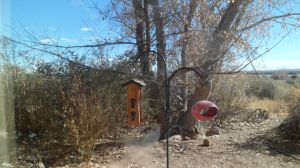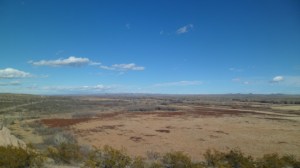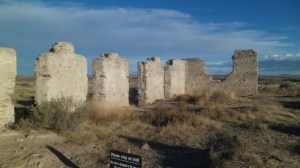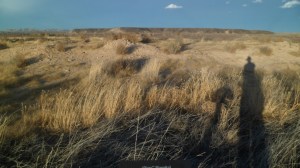December 23, 2014, Lordsburg- When I was a very young child, about 4 or 5, my maternal grandmother would occasionally babysit us, so both our parents could work. Grama would sometimes have the radio broadcasting something about truth or consequences. I could barely say the second name, but I knew what truth meant, and figured consequences were some kind of lies.
In March, 1950, shortly after i would have been conceived, the game show host Ralph Edwards, celebrating ten years of his successful radio show, “Truth or Consequences”, took an idea from a couple of staff members- to name an American town after the show. The town selected was Hot Springs, New Mexico, which had the advantage of already being a prime tourist destination, due to its eponymous mineral baths and nearby Elephant Butte Lake, a man-made reservoir of the Rio Grande. On April 1, Mr. Edwards, his wife and several crew members went to Hot Springs, for the official renaming, and the City of Truth or Consequences, “TRC”, was born.
I spent Monday night and Tuesday morning, enjoying the hospitality and vibrant civic spirit of this remarkable little community. Here are some scenes from the Hot Springs Historic District and Geronimo Springs Historical Museum, Sierra County’s place of record. The painted water tower and some brightly coloured homes reminded me of Bisbee, AZ.

The San Andres Mountains rise to the southeast. Quirky shops and eateries are scattered throughout the town.
Quirky shops and eateries are scattered throughout the town. Geronimo Springs Museum is a well-ordered and delightful place in which to learn of west central New Mexico.
Geronimo Springs Museum is a well-ordered and delightful place in which to learn of west central New Mexico. A display of coloured glass and ceramic greets the visitor, outside.
A display of coloured glass and ceramic greets the visitor, outside. So, too, does a log cabin.
So, too, does a log cabin.

 Inside the museum are many features of paleontology, anthropology, local culture and history. I started with Pleistocene relics, a mammoth skull, and one of a mastodon.
Inside the museum are many features of paleontology, anthropology, local culture and history. I started with Pleistocene relics, a mammoth skull, and one of a mastodon.

 Going backwards in time, here is a Devonian coral.
Going backwards in time, here is a Devonian coral. Next, are some fern fossils.
Next, are some fern fossils.
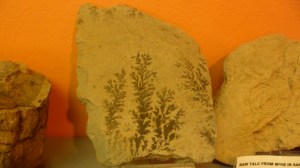 This is the tale of a chair, brought from the original Sierra County Courthouse, in nearby Hillsboro. The two towns disputed which would be county seat, and the State of New Mexico ruled in favour of Hot Springs.
This is the tale of a chair, brought from the original Sierra County Courthouse, in nearby Hillsboro. The two towns disputed which would be county seat, and the State of New Mexico ruled in favour of Hot Springs. The historical exhibits showed portraits of Geronimo, Don Juan de Onate, and cowboy author Eugene Rhodes. This local hero outshines them all, in my opinion.
The historical exhibits showed portraits of Geronimo, Don Juan de Onate, and cowboy author Eugene Rhodes. This local hero outshines them all, in my opinion. I left “TRC” a bit later than I had planned, but some serendipity is worth delayed gratification elsewhere. I would end up putting off a visit to Gila Cliff Dwellings National Monument and a walk around Silver City, but along the way to that area, I encountered several little gems.
I left “TRC” a bit later than I had planned, but some serendipity is worth delayed gratification elsewhere. I would end up putting off a visit to Gila Cliff Dwellings National Monument and a walk around Silver City, but along the way to that area, I encountered several little gems.
Hillsboro, the aforementioned rival, was mostly closed up for the holidays.
 Not far up the road is Percha Creek, with a truss bridge and adjacent walkway/overlook.
Not far up the road is Percha Creek, with a truss bridge and adjacent walkway/overlook.
 Emory Pass, at 8230 feet, is the highest point along this exquisite highway. Here, I encountered a writer from Martha’s Vineyard, who is looking to relocate to warmer climes. I gave him a few possible sites to explore, in that regard. Emory was definitely not one of them- but it is a place of splendour.
Emory Pass, at 8230 feet, is the highest point along this exquisite highway. Here, I encountered a writer from Martha’s Vineyard, who is looking to relocate to warmer climes. I gave him a few possible sites to explore, in that regard. Emory was definitely not one of them- but it is a place of splendour.
 I stopped for lunch at La Tienda del Sol, in San Lorenzo, before visiting the Mimbres Ranger Station, which confirmed my suspicions about Gila Cliff Dwellings closing at 4 PM. This delightful little place was full into the holiday spirit, as was Sunset Grill, in TRC, last night and this morning.
I stopped for lunch at La Tienda del Sol, in San Lorenzo, before visiting the Mimbres Ranger Station, which confirmed my suspicions about Gila Cliff Dwellings closing at 4 PM. This delightful little place was full into the holiday spirit, as was Sunset Grill, in TRC, last night and this morning.
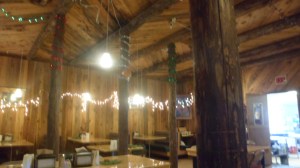 I headed to Silver City, in the end, spent a short time at Fort Bayard National Cemetery, then continued down to Lordsburg. The dusty desert town has its own gems, among them the comfortable and inexpensive Holiday Motel (NOT “Inn”) and Kranberry’s Family Restaurant, open for lunch and dinner. I was treated like royalty in both places. Days like this will bring me back to this area in the Spring, and then we’ll see about Gila Cliff Dwellings and vicinity.
I headed to Silver City, in the end, spent a short time at Fort Bayard National Cemetery, then continued down to Lordsburg. The dusty desert town has its own gems, among them the comfortable and inexpensive Holiday Motel (NOT “Inn”) and Kranberry’s Family Restaurant, open for lunch and dinner. I was treated like royalty in both places. Days like this will bring me back to this area in the Spring, and then we’ll see about Gila Cliff Dwellings and vicinity.
























